Home>Gardening & Outdoor>Plant Care & Gardening Tips>Why Are My Mums Losing Color

Plant Care & Gardening Tips
Why Are My Mums Losing Color
Published: February 16, 2024
Discover expert plant care and gardening tips to prevent your mums from losing color. Learn how to maintain vibrant and healthy blooms for your garden.
(Many of the links in this article redirect to a specific reviewed product. Your purchase of these products through affiliate links helps to generate commission for Storables.com, at no extra cost. Learn more)
Introduction
Mums, also known as chrysanthemums, are beloved for their vibrant and captivating blooms, making them a popular choice for gardens and floral arrangements. These resilient and versatile plants come in a variety of colors, shapes, and sizes, adding a burst of color to any outdoor space. However, as a plant enthusiast, it can be disheartening to witness the once-lively hues of your mums fading or losing their vibrancy. If you've noticed your mums losing color, it's essential to delve into the potential causes and remedies to restore their natural beauty.
In this comprehensive guide, we will explore the various factors that may contribute to the loss of color in mums. From environmental influences to potential pests and diseases, we will unravel the mysteries behind this phenomenon and provide actionable insights to help you revive the stunning hues of your mums. Whether you're a seasoned gardener or a novice plant enthusiast, understanding the reasons behind your mums' fading colors is crucial in nurturing them back to their full splendor.
Let's embark on this journey to uncover the underlying reasons for your mums' color loss and equip ourselves with the knowledge and strategies needed to address this issue effectively. By the end of this guide, you will be empowered with the expertise to identify, troubleshoot, and resolve the color loss in your mums, allowing you to witness their resplendent blooms once more.
Key Takeaways:
- Lack of sunlight can make mums lose their vibrant colors. Move them to sunnier spots and trim surrounding foliage to help them thrive and bloom beautifully.
- Overwatering or underwatering can also cause mums to lose color. Balance watering and use well-draining soil to keep mums healthy and colorful.
Read more: Why Are My Mums Wilting
Lack of Sunlight
The availability of adequate sunlight is paramount for the optimal growth and vibrant coloration of mums. These sun-loving plants thrive when exposed to direct sunlight for at least six hours a day. When mums are deprived of sufficient sunlight, their ability to photosynthesize and produce pigments essential for their colorful blooms is compromised. As a result, the lack of sunlight can lead to a noticeable loss of color in the flowers.
Inadequate sunlight can manifest in various ways, such as pale or faded blooms, stunted growth, and reduced flower production. When mums do not receive the necessary sunlight, their overall health and vitality are adversely affected, impacting their ability to display their characteristic rich and vivid colors.
To address the issue of lack of sunlight, it is crucial to assess the current positioning of the mums in the garden or outdoor space. If the plants are overshadowed by tall trees, structures, or other obstructions, they may not be receiving the required amount of sunlight. In such cases, relocating the mums to a sunnier spot can significantly improve their access to sunlight and subsequently enhance their coloration.
Furthermore, pruning surrounding foliage or structures that obstruct sunlight can create a more favorable environment for the mums to thrive. Additionally, regular monitoring of the sun exposure in the garden and adjusting the placement of potted mums accordingly can ensure that they receive the optimal amount of sunlight for vibrant and colorful blooms.
By addressing the issue of lack of sunlight, mums can regain their vigor and radiant hues, captivating onlookers with their resplendent and lively blossoms. Understanding the pivotal role of sunlight in the coloration and overall health of mums empowers gardeners to create an environment that fosters the flourishing of these magnificent plants.
In summary, the lack of sunlight can significantly impact the coloration of mums, leading to faded or pale blooms. By prioritizing adequate sun exposure and implementing strategic adjustments in the garden or outdoor space, the vibrancy and allure of mums can be revitalized, allowing them to thrive and showcase their captivating colors to the fullest.
Overwatering
Overwatering is a common yet detrimental practice that can adversely affect the health and appearance of mums. When these resilient plants are subjected to excessive moisture, their roots suffocate, leading to a cascade of negative effects, including the loss of color in their blooms. The consequences of overwatering extend beyond surface-level symptoms, permeating the very core of the plant's physiological processes.
The impact of overwatering on mums is profound, often resulting in wilting, yellowing of leaves, and a noticeable decline in flower coloration. The excessive presence of water in the soil impedes the uptake of essential nutrients and oxygen by the roots, disrupting the plant's ability to thrive and exhibit its characteristic vibrant hues. As a result, the once-lively blooms of mums may appear lackluster and faded, signaling the detrimental effects of overwatering.
To address the issue of overwatering, it is imperative to adopt a mindful and balanced approach to watering mums. Assessing the moisture levels in the soil and allowing it to partially dry out between watering sessions can prevent the onset of overwatering. Additionally, incorporating well-draining soil and suitable containers for potted mums can facilitate proper water drainage, mitigating the risk of waterlogged conditions that contribute to color loss.
Furthermore, implementing a watering schedule that aligns with the specific needs of mums, taking into account environmental factors such as humidity and rainfall, can prevent the accumulation of excess moisture in the soil. By striking a harmonious balance between hydration and aeration, mums can thrive and showcase their vibrant colors without the impediment of overwatering.
In summary, overwatering poses a significant threat to the coloration and overall well-being of mums, manifesting in faded and lackluster blooms. By embracing mindful watering practices, optimizing soil drainage, and tailoring watering routines to the unique requirements of mums, the detrimental effects of overwatering can be mitigated. This proactive approach empowers gardeners to nurture mums back to their full splendor, allowing their captivating colors to flourish once more.
Underwatering
Underwatering, the insufficient provision of water to plants, can have profound implications for the health and appearance of mums. When mums experience inadequate hydration, their physiological processes are disrupted, leading to a range of visible symptoms, including the loss of color in their blooms. The impact of underwatering extends beyond surface-level manifestations, permeating the very essence of the plant's vitality.
Mums subjected to underwatering may exhibit signs of distress, such as wilting, drooping leaves, and a noticeable reduction in flower coloration. The scarcity of water hinders the plant's ability to maintain turgidity and sustain optimal metabolic functions, resulting in blooms that appear faded and lackluster. The vibrancy and allure that are characteristic of mums may diminish in the absence of adequate hydration, signaling the detrimental effects of underwatering.
To address the issue of underwatering, it is imperative to prioritize a consistent and balanced approach to watering mums. Regularly assessing the moisture levels in the soil and ensuring that it remains sufficiently hydrated without being waterlogged is essential for the well-being of these resilient plants. Incorporating a watering schedule that aligns with the specific needs of mums, accounting for environmental factors such as temperature and humidity, can prevent the onset of underwatering and its associated consequences.
Furthermore, fostering an environment conducive to proper hydration, such as utilizing well-draining soil and suitable containers for potted mums, can facilitate the retention of adequate moisture without the risk of water stagnation. By embracing mindful watering practices and tailoring hydration routines to the unique requirements of mums, the detrimental effects of underwatering can be mitigated, allowing these captivating plants to thrive and exhibit their vibrant colors to the fullest.
In summary, underwatering poses a significant threat to the coloration and overall well-being of mums, resulting in blooms that appear faded and lackluster. By prioritizing consistent and balanced watering practices, optimizing soil moisture levels, and tailoring hydration routines to the specific needs of mums, the detrimental effects of underwatering can be alleviated. This proactive approach empowers gardeners to nurture mums back to their full splendor, allowing their captivating colors to flourish once more.
Nutrient Deficiency
Nutrient deficiency can significantly impact the coloration and overall vitality of mums, leading to a range of visible symptoms that detract from their natural vibrancy. These resilient plants rely on a balanced intake of essential nutrients to support their physiological processes, including the production of pigments that contribute to their captivating blooms. When mums experience a shortage of vital nutrients, their ability to showcase vibrant and rich colors may be compromised, signaling the presence of nutrient deficiency.
The absence or imbalance of key nutrients such as nitrogen, phosphorus, potassium, and micronutrients can manifest in various ways, including faded or discolored leaves, stunted growth, and diminished flower coloration. Nitrogen deficiency, for example, can result in pale green or yellowing leaves, detracting from the overall visual appeal of the plant. Similarly, inadequate levels of phosphorus and potassium can impact the plant's ability to produce robust and colorful blooms, leading to a noticeable loss of vibrancy.
To address the issue of nutrient deficiency, it is crucial to assess the specific needs of mums and ensure that they receive a well-rounded and balanced supply of essential nutrients. Incorporating a suitable fertilizer regimen tailored to the requirements of mums can provide the necessary elements to support robust growth and vibrant coloration. Selecting a fertilizer with a balanced NPK (nitrogen, phosphorus, and potassium) ratio, along with essential micronutrients such as iron, magnesium, and calcium, can fortify the mums' nutrient intake, promoting healthy and colorful blooms.
Furthermore, regular soil testing can offer valuable insights into the nutrient composition of the growing medium, enabling gardeners to make informed decisions regarding the supplementation of deficient nutrients. By addressing nutrient deficiencies through targeted fertilization and soil amendment, mums can regain their vigor and showcase their characteristic vibrant colors, captivating onlookers with their resplendent blooms.
In summary, nutrient deficiency can impede the coloration and overall health of mums, resulting in blooms that appear lackluster and faded. By prioritizing a balanced and targeted approach to nutrient supplementation, tailored to the specific needs of mums, the detrimental effects of nutrient deficiency can be mitigated. This proactive strategy empowers gardeners to nurture mums back to their full splendor, allowing their captivating colors to flourish once more.
Ensure your mums are getting enough sunlight and water. Add fertilizer to replenish nutrients. Check for pests or diseases and treat accordingly.
Read more: Why Is My Air Mattress Losing Air
Pests and Diseases
Pests and diseases pose significant threats to the health and vibrancy of mums, often manifesting in visible symptoms that detract from their natural allure. These resilient plants, cherished for their captivating blooms, are susceptible to a range of pests and diseases that can compromise their coloration and overall well-being. Understanding the potential adversaries that mums may encounter is crucial in implementing proactive measures to safeguard them from these detrimental influences.
Pests
Mums are vulnerable to infestations by various pests, including aphids, spider mites, and caterpillars, among others. These pests can wreak havoc on the foliage and blooms of mums, leading to discoloration, wilting, and distortion of plant tissues. Aphids, for instance, feed on the sap of mums, causing leaves to curl and distort while also serving as vectors for viral diseases. Spider mites, tiny arachnids, can inflict damage by piercing plant cells and extracting their contents, resulting in stippled or discolored leaves. Caterpillars, voracious consumers of foliage, can defoliate mums and compromise their ability to produce vibrant blooms.
Diseases
Mums are susceptible to fungal, bacterial, and viral diseases that can manifest in a range of symptoms, including leaf spots, wilting, and discoloration of blooms. Fungal diseases such as powdery mildew and botrytis can lead to the development of unsightly white or grayish patches on leaves and flowers, detracting from their visual appeal. Bacterial infections, characterized by wilting and darkened lesions, can compromise the overall vigor of mums. Viral diseases, transmitted through pests or contaminated tools, can result in stunted growth and distorted or discolored foliage.
Mitigation Strategies
Implementing integrated pest management (IPM) practices, such as regular monitoring for pest activity, promoting natural predators, and employing targeted interventions when necessary, can help mitigate the impact of pests on mums. Additionally, maintaining proper air circulation, avoiding overhead watering, and practicing good sanitation can reduce the risk of fungal and bacterial diseases. Selecting disease-resistant varieties and promptly removing and disposing of infected plant material can further bolster the resilience of mums against diseases.
By being vigilant and proactive in addressing potential pest and disease threats, gardeners can create an environment that fosters the flourishing of mums, allowing them to showcase their vibrant colors without the impediment of detrimental adversaries. Through a combination of preventive measures and strategic interventions, mums can thrive and captivate with their resplendent blooms, free from the constraints imposed by pests and diseases.
Read more: Why Is My Leaf Blower Losing Power
Conclusion
In conclusion, the loss of color in mums can be attributed to a myriad of factors, each exerting its influence on the vibrancy and allure of these captivating plants. From environmental considerations such as sunlight availability and watering practices to the nuanced realm of nutrient balance and the persistent threats posed by pests and diseases, the journey to understanding and addressing color loss in mums is multifaceted and dynamic.
By delving into the intricacies of sunlight exposure, we uncovered the pivotal role of this essential element in nurturing the resplendent colors of mums. The significance of providing adequate sunlight to these sun-loving plants cannot be overstated, as it directly impacts their ability to produce and showcase vibrant blooms. Through strategic positioning and mindful garden management, the impediments of insufficient sunlight can be overcome, allowing mums to thrive and exhibit their characteristic hues to the fullest.
Furthermore, the delicate balance of watering practices emerged as a critical determinant of mums' coloration and overall well-being. The perils of overwatering and underwatering underscore the importance of adopting a balanced and attentive approach to hydration, ensuring that mums receive the optimal moisture levels necessary for their vitality and vibrant blooms. By embracing mindful watering practices and optimizing soil drainage, the detrimental effects of water-related imbalances can be mitigated, empowering mums to flourish and captivate with their resplendent colors.
The intricate interplay of nutrient availability and uptake unveiled the profound impact of nutrient deficiency on the coloration of mums. By recognizing the specific nutrient requirements of these resilient plants and implementing targeted fertilization and soil amendment, the impediments of nutrient deficiency can be addressed, allowing mums to regain their vigor and showcase their captivating colors without restraint.
Moreover, the looming specter of pests and diseases highlighted the need for proactive measures to safeguard mums from detrimental adversaries. Through integrated pest management practices and disease mitigation strategies, the resilience of mums against the threats posed by pests and diseases can be bolstered, creating an environment that fosters their flourishing and vibrant blooms.
In essence, the journey to unraveling the mysteries behind color loss in mums has equipped us with the knowledge and strategies needed to nurture these captivating plants back to their full splendor. By embracing a holistic and proactive approach that encompasses environmental considerations, watering practices, nutrient balance, and pest and disease management, gardeners can empower mums to thrive and captivate with their resplendent colors, ensuring that their vibrant blooms continue to enchant and inspire.
Frequently Asked Questions about Why Are My Mums Losing Color
Was this page helpful?
At Storables.com, we guarantee accurate and reliable information. Our content, validated by Expert Board Contributors, is crafted following stringent Editorial Policies. We're committed to providing you with well-researched, expert-backed insights for all your informational needs.

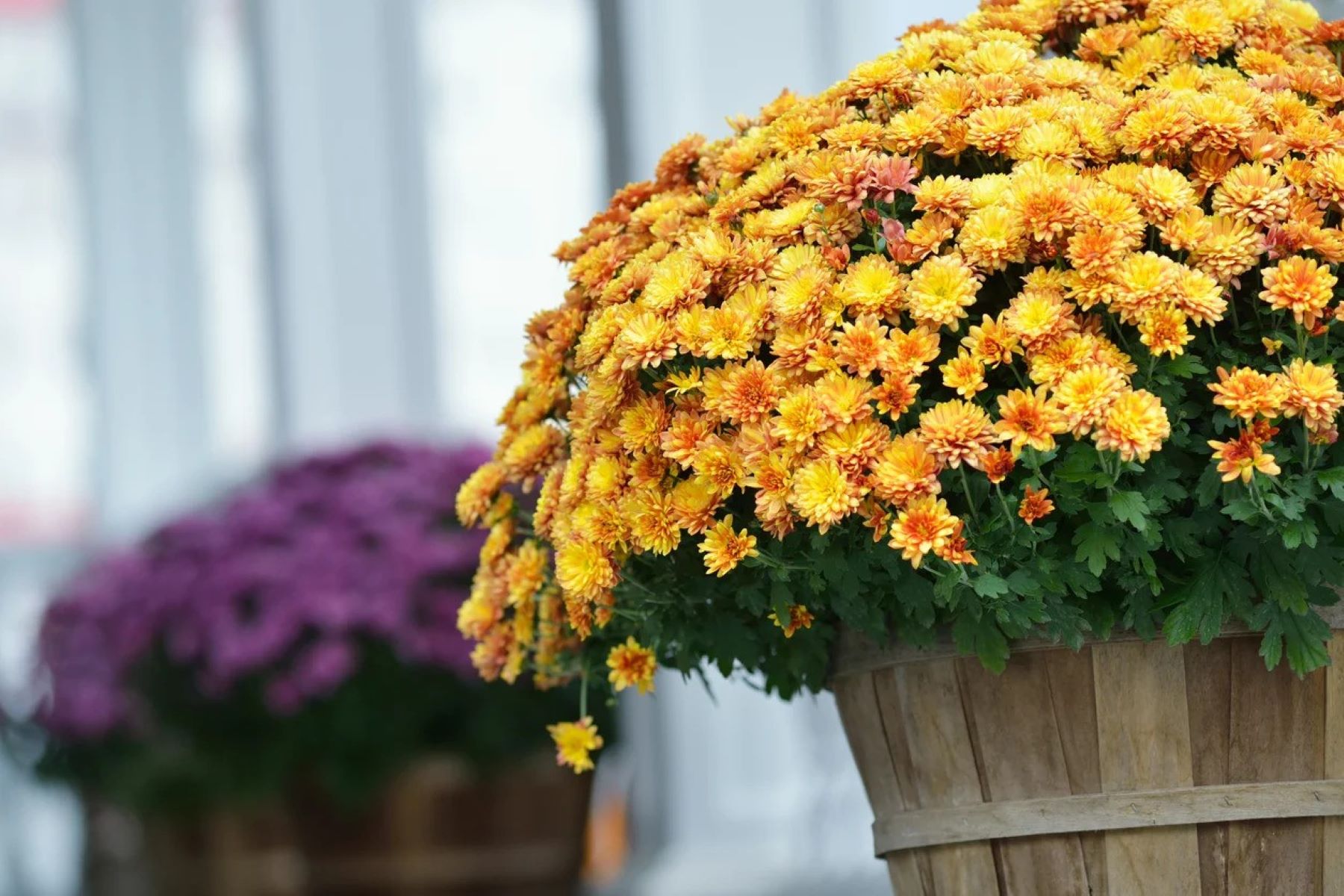









0 thoughts on “Why Are My Mums Losing Color”